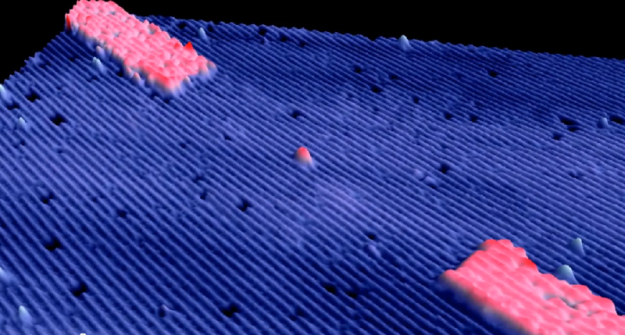Scientists create working transistor from a single atom

Researchers from the University of New South Wales have achieved an astonishing feat: the first-ever creation of a working transistor from a single atom.
Since 1954, when Texas Instruments scientist, George Teal, created the first silicon transistor, the innovations in creating smaller and smaller transistors have paved the way for the manufacturing of today’s computers and mobile devices. A single device may hold billions of transistors, which work together in concert to perform simple binary calculations. With more transistors packed into a specified area, calculations will become faster and computers will be able to store more information, all the while requiring less power than contemporary transistors.
The creation of single-atom transistors using silicon has been recreated in the past, albeit accidentally. Until today, the margin of error to beat has been ten nanometers. (A nanometer equals one billionth of a meter, just FYI.) But for a single-atom transistor to be utilized in computers and other devices for practical use, requires the ability to isolate and situate a single atom accurately onto a silicon chip. According to nanotechnology journal Nature Nanotechnology, however, this is precisely what the researchers have done.
Here’s how they did it: Using a scanning tunneling microscope (a device that allows researchers to see the atoms, and provides them the precision necessary for atom manipulation) the researchers etched a narrow channel into a silicon base. Phosphine gas was then deployed, which carried an isolated atom of phosphorous to a desired area between two electrodes. When an electric current was passed through the device, it amplified and switched electrical signals — just like any other working transistor.
The Australian team’s milestone achievement brings mankind one step closer to the practicality of manufacturing quantum computers. Amazingly, the team has also defied Moore’s Law (based on a statement by Gordon Moore to Electronics Magazine in 1965), which estimates the rate at which the number of transistors that can fit on a single circuit will double. Following the rate of doubling every 18 months to two years, Moore’s Law predicts that a working single-atom transistor would be created by 2020. Today, thanks to the New South Wales, this mind-blowing benchmark has been achieved about eight years earlier than anticipated.
Not surprisingly, the research’s undertaking was inspired by Moore’s Law. “We really decided 10 years ago to start this program to make single-atom devices as fast as we could, and try and beat that law,” said Michelle Simmons, director of the ARC Centre for Quantum Computation and Communications, and the team’s head researcher. “So here we are in 2012, and we’ve made a single-atom transistor in roughly about eight to 10 years ahead of where the industry is going to be.”
Despite the breakthrough, you won’t be seeing its application for the next 15 to 20 years. Until the process to manufacture and operate the device — which can only currently function in minus 391 degrees — is refined for the transistor’s use outside of labs, the device in its current state is just a working proof of concept.
This article was originally posted on Digital Trends
More from Digital Trends
Raspberry Pi $35 mini computer to ship in late February
IBM achieves breakthrough in data storage technology, creates world’s smallest storage device

